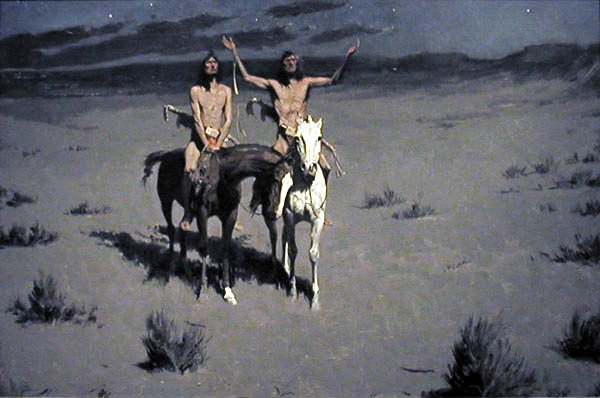Frederic Remington’s Artistic Legacy: Capturing the American West
Frederic Remington, born in 1861, is an artist synonymous with the American West. His work has done more than any other to define the public’s image of the American frontier. Predominantly focusing on the last quarter of the 19th century, his paintings, drawings, and sculptures depict dynamic scenes of cowboys, Native Americans, cavalry, and wildlife, imbued with a dramatic sense of action and authenticity that few artists of his time could parallel.
Surprisingly, Remington’s early life in Canton, New York, did not directly expose him to the wild settings of his future work. His formative years were instead filled with schooling and attendance at Yale’s School of Art, although it was short-lived due to his father’s untimely death. His professional life commenced with business ventures but quickly turned to art and journalism. Through his travels for reporting, particularly in the West and around the U.S. military, he gathered the experiences and insights that would fuel his artworks.
His technique, characterized by meticulous attention to detail and a profound commitment to realism, set his work apart. Remington’s art was not just about capturing the physical action of the frontier but also its spirit. His paintings often portrayed the rugged landscapes and intense skirmishes of the West, while his sculptures conveyed the motion and emotion of his subjects with striking realism. One of the notable aspects of Remington’s work was his ability to capture light and shadow, using these elements to enhance the narrative quality of his compositions.
Frederic Remington also stood out because of his journalistic approach to art. He was a correspondent and an artist, writing and illustrating scenes from the frontier for major publications like Harper’s Weekly. This dual role enriched his artworks with a narrative depth, as they often reflected firsthand accounts of the events and characters of the American West. His images were not just static portrayals but were vibrant with the stories and struggles of their subjects.
“The Broncho Buster,” one of Remington’s most famous sculptures, exemplifies his skill in depicting motion and emotion. The sculpture portrays a mid-action cowboy struggling to stay atop a fiercely bucking bronco. This piece is celebrated for its dynamic energy and fine detail, capturing the essence of the wild spirit of the horse and the rider. It’s a vivid expression of the challenges and thrills of frontier life, showcasing Remington’s mastery over form and subject matter.
In the realm of painting, Remington’s “A Dash for the Timber“ artwork is a masterpiece that vividly captures a moment of high drama and peril in the American West. Created in 1889, it depicts a group of cowboys firing behind them as they ride full speed into a wooded grove, fleeing from unseen Indigenous attackers. The painting is lauded for its dynamic composition and intense emotion, effectively conveying the urgency and danger of the frontier. This artwork exemplifies Remington’s skill in action scenes and reflects his deep engagement with themes of conflict and survival in the Wild West.
Remington’s commitment to authenticity was reflected in his extensive collection of artefacts and clothing, which he used as models for his work to ensure accuracy in every detail, from the attire of his characters to the tack of the horses. This dedication helped endear his work to those who knew the West intimately and those who had never visited. His works are considered some of the most realistic and poignant portrayals of Western life during the period.
Moreover, his influence extended beyond his lifetime. Remington’s art played a significant role in shaping the perception of the American West worldwide. His images were instrumental in creating a narrative of the West as a land of endless adventure and dramatic landscapes, influencing art, literature, and film. The ‘Wild West‘ genre remains popular globally and owes much to Remington’s depictions of its landscapes and characters.
Throughout his career, Remington also grappled with the changes overtaking the West, such as the encroachment of technology and the closing of the frontier. His later works often conveyed a melancholy for the passing of an era he cherished. This reflective aspect provides a deeper layer to his work, suggesting a nostalgia for the vanishing landscapes and ways of life he vividly captured.
Frederic Remington died in 1909, but his legacy endures. His art is housed in many significant national collections and continues to receive critical acclaim. Museums dedicated to Western art, such as the Frederic Remington Art Museum in Ogdensburg, New York, and the Buffalo Bill Center of the West in Wyoming, preserve and display his works, ensuring that future generations can experience his unique vision of the American West.
In conclusion, Frederic Remington was not just an artist; he was a storyteller whose canvas spoke of the vigour and vitality of the American frontier. His works remain a vital part of American cultural heritage, embodying the spirit of an era that, though gone, continues to fascinate and inspire. Through his art, Remington immortalised the dynamic and tumultuous world of the Old West, capturing its dramas and daily realities with a vividness that no other artist has quite matched.

